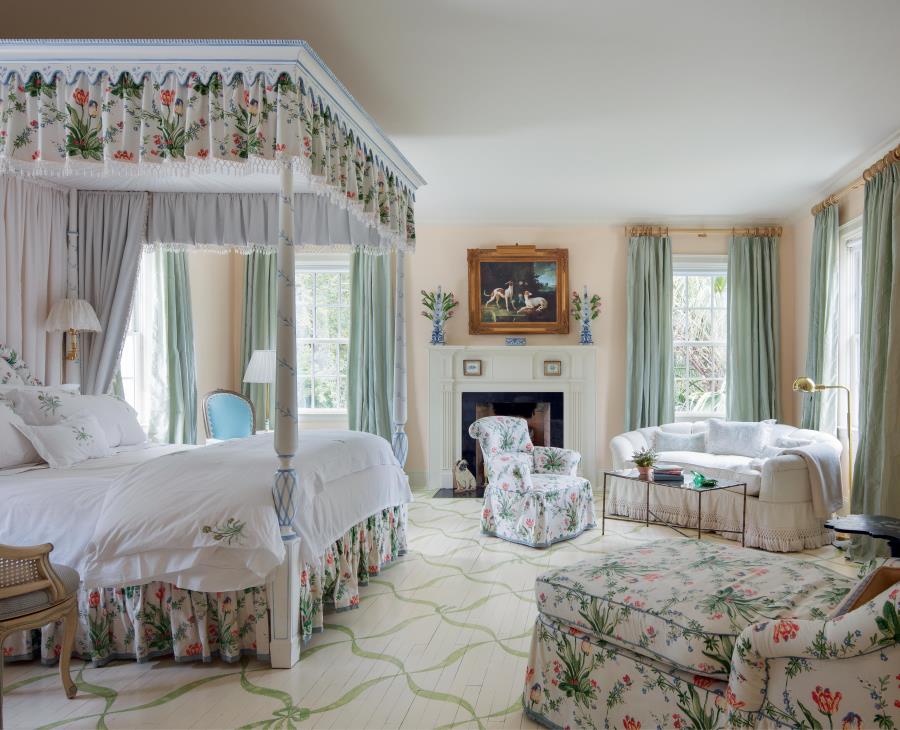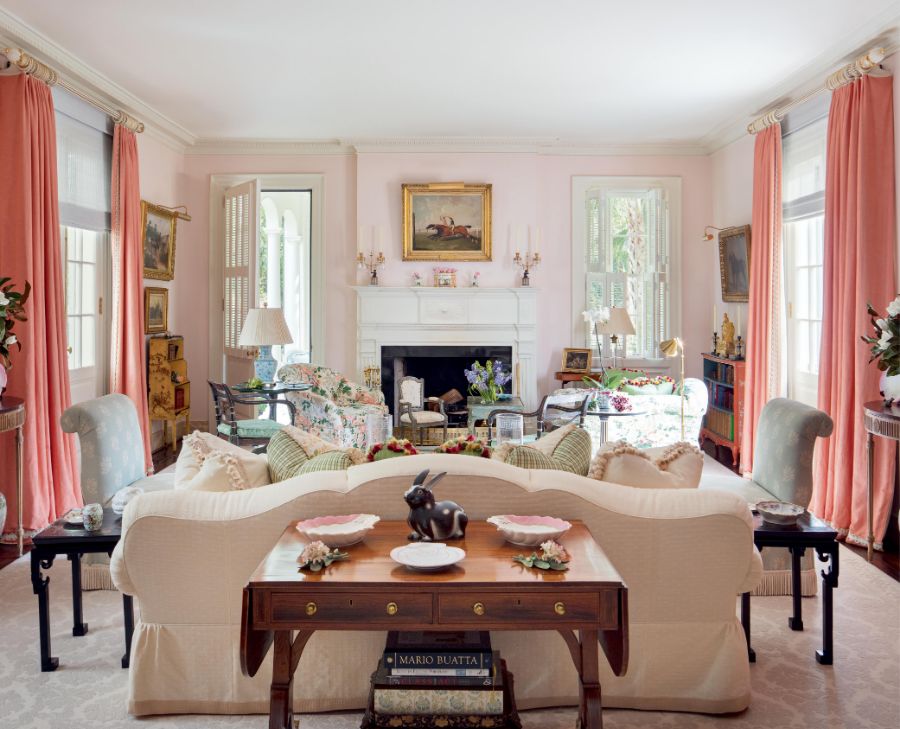Some years ago, the renowned American decorator Mario Buatta—nicknamed the "Prince of Chintz"—came to a party at my home bearing an elaborately wrapped gift that he said was a family heirloom. As he handed me the gift, it slipped from our fingers and fell to the floor with the sound of shattering glass. As I looked on in horror, Mario started to laugh; it was a party prank. Because as much as he loved a proper chintz, Mario also loved a mischievous prank.
Buatta had become one of the most popular and well-known decorators of his day by successfully bringing a fresh version of English Country House style, with its elegantly gracious mix of soft upholstered furniture, floral fabrics, glazed paints, fine antiques and fresh flowers to American clients. Born and raised on Staten Island and with little higher education, he was a totally self-taught and self-made. The designer passed away in 2018 at the age of 82, and now his friend, design historian and writer Emily Evans Eerdmans, has published "Mario Buatta: Anatomy of a Decorator" (Rizzoli), which is an in-depth investigation into the question, "How did he do it?"
.jpg)
Eerdmans became friendly with Buatta when she co-authored his book “Mario Buatta: Fifty Years of American Interior Decoration,” which presented a thorough collection of the designer's published decorating projects. A gregarious hostess with an encyclopedic knowledge of interior design, she also runs Eerdmans, a gallery and advisory located in a Greenwich Village townhouse with a bucolic garden in the back, where she lives with her husband. Eerdmans was with Buatta when he passed away and became the steward of his estate, organizing the blockbuster auction of his collection at Sotheby's. For this new book, she sought to raise up his legacy and pull back the curtain to show how Buatta achieved his craft.
As a young man, Buatta had the good fortune to travel to England, where he met Nancy Lancaster and John Fowler of the decorating firm Colefax & Fowler. The English Country House style, created by Colefax & Fowler, struck a deep nerve with Buatta, who loved its romantic atmosphere and deep comfort. Colefax & Fowler's yellow walls, white moldings, elaborate draperies, chintz fabrics, and pictures hung from pale blue ribbons with bows made their way into Buatta's pretty, Americanized version.

Buatta learned some tricks from John Fowler, like using three shades of white on wood millwork: the darkest on the stiles and railings, a mid-white on panels, and the lightest on moldings. To create the effect that furniture had been collected over time, Buatta covered a chair in a slightly clashing color to make it look as if it had been inherited or added later. Some adjustments had to be made for American interiors, said Eerdmans over cappuccinos at the Marlton Hotel. "Because of the lack of incredible architecture and stately proportions in American interiors, Mario shifted the importance to elaborate curtains and upholstered furniture that became a stand-in for architecture."
To this English style and tradition, Buatta added his own personal mastery of color. He favored fresh, clear, light tones in his interiors as opposed to dark, earthy palettes that are popular now. Shades of lemon, peach, rose, cantaloupe, mint, and light blue illuminate Buatta's room. "Mario said if you want to learn about color and design, look to the garden and patterns of nature," reported Eerdmans. "I always tell my clients that decorating a room should be like painting a picture," Buatta once said. Like strokes of a brush, he created a scheme board that included swatches of fabric, trims, carpet and paint. "When I do a floor plan, I cut little pieces of fabric and place them around the room to get a balance," he said. In this way, Buatta painted with tones and pattern throughout a room. "For Mario, color had a sunny optimism," said Eerdmans. "It's cheerful, it's joyful, it's a mood boost."

I saw Mario cast his spell once when I was an editor producing a story about a Kips Bay Decorator Showhouse. Other designers, including Mark Hampton and Albert Hadley, were busy working on their rooms. In Mario style, Buatta was chatting and being friendly to all, seemingly not getting much done on his project, which was called the Conservatory Landing but was basically the space at the top of the stairs. However, when it was soon completed and I returned, he had created an enchanting interior with mauve walls, a light blue ceiling, striped silk curtains, a white couch with pastel pillows, and pots of hydrangeas. Out of seemingly nothing, he had magically conjured a dreamy world of comfort and delight — the world of Mario Buatta.


